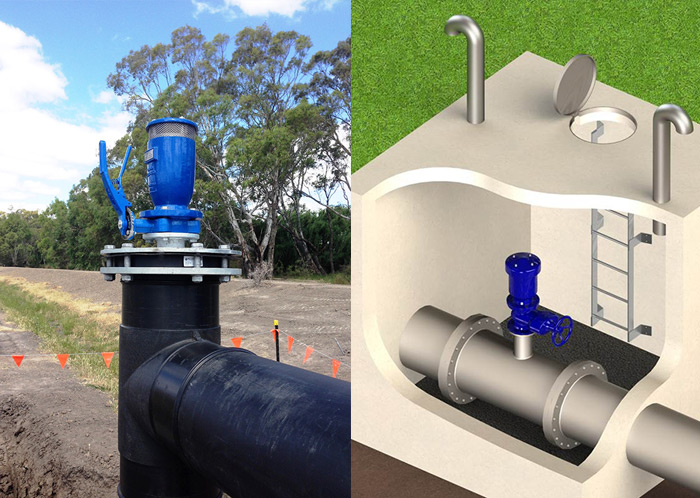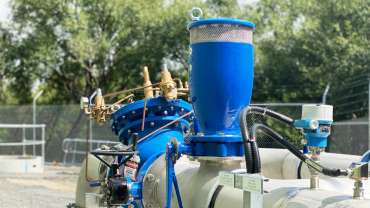Air valve selection in water lines
![airvalve1 An air valve for water transfer pipelines. Left in real life, and right is a digital model]()
Air valves are rarely selected for pipelines as a result of airflow calculations.
Calculate your air flow requirements first, then select an air valve model that meets them.
The issue
Using the incorrect air valve for a water transfer pipeline can significantly impact upon the performance characteristics of the line, as well as the efficiency of the transfer.
The solution
Although we recommend accurately calculating your air flow requirements before selecting a product, there are several “rule of thumb” techniques that can assist you in selecting the appropriate valve size. As a quick, general guide, refer to this handy table:
Up to Pipe diameter
Fox-RFP (full port)
Lynx-RFP (reduced port)
DN200
C-1-ARC-RFP (DN25)
C-2R-ARC-RFP (DN50)
DN300
C-2-ARC-RFP (DN50)
C-3R-ARC-RFP (DN80)
DN450
C-3-ARC-RFP (DN80)
C-4R-ARC-RFP (DN100)
DN600
C-4-ARC-RFP (DN100)
C-6R-ARC-RFP (DN150)
DN900
C-6-ARC-RFP (DN150)
C-8R-ARC-RFP (DN200)
DN1200
C-8-ARC-RFP (DN200)
C-10R-ARC-RFP (DN250)

DN100 Fox-RFP (full port)

DN100 Lynx-RFP (reduced port)
Tips and tricks
To most accurately select a suitable product, you should be aware of the following:
- The pipeline material, working pressure and ID
- The pipeline profile, showing CH and RL values with the pipe diameters and class of pipeline
- Scour valve diameters
- Locations of main line isolation valves or pumping stations
- Transfer flow rates and pressures in a hydraulic grade line profile
- Water type being transferred (eg drinking water, dam water, raw river water, treated water, effluent etc)
Make enquiry
Online Enquiry Close

Air valves are rarely selected for pipelines as a result of airflow calculations.
Calculate your air flow requirements first, then select an air valve model that meets them.
The issue
Using the incorrect air valve for a water transfer pipeline can significantly impact upon the performance characteristics of the line, as well as the efficiency of the transfer.
The solution
Although we recommend accurately calculating your air flow requirements before selecting a product, there are several “rule of thumb” techniques that can assist you in selecting the appropriate valve size. As a quick, general guide, refer to this handy table:
| Up to Pipe diameter | Fox-RFP (full port) | Lynx-RFP (reduced port) |
| DN200 | C-1-ARC-RFP (DN25) | C-2R-ARC-RFP (DN50) |
| DN300 | C-2-ARC-RFP (DN50) | C-3R-ARC-RFP (DN80) |
| DN450 | C-3-ARC-RFP (DN80) | C-4R-ARC-RFP (DN100) |
| DN600 | C-4-ARC-RFP (DN100) | C-6R-ARC-RFP (DN150) |
| DN900 | C-6-ARC-RFP (DN150) | C-8R-ARC-RFP (DN200) |
| DN1200 | C-8-ARC-RFP (DN200) | C-10R-ARC-RFP (DN250) |

DN100 Fox-RFP (full port)

DN100 Lynx-RFP (reduced port)
Tips and tricks
To most accurately select a suitable product, you should be aware of the following:
- The pipeline material, working pressure and ID
- The pipeline profile, showing CH and RL values with the pipe diameters and class of pipeline
- Scour valve diameters
- Locations of main line isolation valves or pumping stations
- Transfer flow rates and pressures in a hydraulic grade line profile
- Water type being transferred (eg drinking water, dam water, raw river water, treated water, effluent etc)



